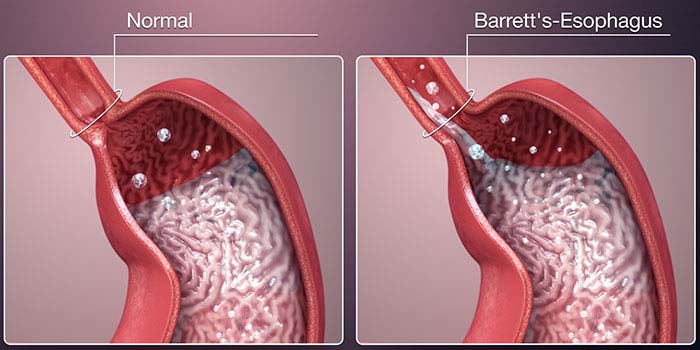
Best Doctor for Barrett's Esophagus Treatment in Mumbai
What is Barrett’s esophagus?
Barrett’s esophagus is a condition in which the tissue lining your esophagus changes to more closely resemble intestinal tissue. The condition affects some people with long-term gastroesophageal reflux disease (GERD), or acid reflux. Though not everyone with GERD develops Barrett’s esophagus, long-term GERD is the primary risk factor.
GERD causes the digestive acid in your stomach to back up into your esophagus. This repeated exposure to stomach acid, and resulting inflammation, can cause serious complications, including Barrett’s esophagus. The change in cells results from your esophagus trying to heal itself.
Barrett’s esophagus doesn’t cause any symptoms, but it’s a warning sign of increased risk for adenocarcinoma, a rare form of esophageal cancer. Barrett’s esophagus doesn’t always turn into cancer, but the best way to prevent adenocarcinoma is to get screened for changes in your esophagus.
How is Barrett’s esophagus diagnosed?
If you have GERD, one of the physicians may recommend screening for Barrett’s esophagus using an upper endoscopy and biopsy.
Upper endoscopy involves using an endoscope, a flexible tube fitted with a camera, to look at your esophagus while you’re under light sedation. Tissue affected by Barrett’s esophagus looks distinctly different from ordinary esophageal tissue.
During the upper endoscopy, the physician may also perform a biopsy, taking small samples of tissue for a pathologist in a lab to examine. The pathologist looks for signs of dysplasia, or precancerous changes, to determine your risk of developing cancer.
You may have no dysplasia, low-grade dysplasia (small signs of precancerous changes), or high-grade dysplasia (many precancerous changes).
How is Barrett’s esophagus treated?
The goal of treatment for Barrett’s esophagus is to prevent it from developing into cancer. The treatment recommended depends on the degree of dysplasia you have.
No dysplasia
If you don’t have any dysplasia, the physicians recommend a follow-up screening a year later and then additional screenings every three years if there are no further changes. They may also recommend changes to your GERD treatment plan, including medication, diet, or surgery.
Low-grade dysplasia
If you have low-grade dysplasia, the physicians recommend a1 follow-up screening six months later and then additional screenings every six to 12 months. They may also recommend a procedure to remove the affected cells.
High-grade dysplasia
High-grade dysplasia is considered the final stage before developing cancer, so it requires treatment to remove abnormal cells. This may include surgery, cryotherapy (freezing the cells), or photodynamic therapy (using light to destroy cells).


